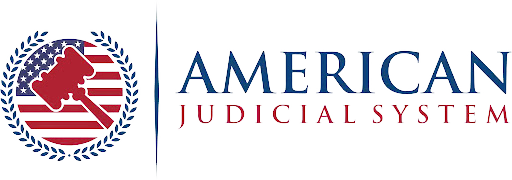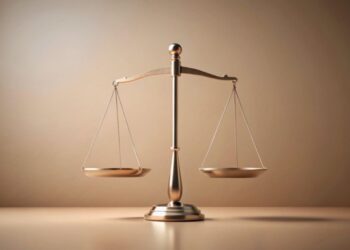Imagine this: you’re going about your day when something goes wrong and everything goes off kilter. Suddenly you’re dealing with injuries, medical bills and a whole lot of confusion. In these moments understanding negligence in personal injury claims is key. Negligence is the foundation that determines if you’re entitled to be compensated for your injuries.
You’re not alone in this – thousands go through this every year. By learning about negligence you’re taking the first step in understanding how to look after your rights and interests after an accident.
Understanding Negligence
Definition of Negligence
Negligence is a legal term where someone fails to exercise the level of care that a reasonable person would in the same situation. This failure causes harm to another person. To succeed in a claim you must prove the defendant owed a duty of care, breached that duty and caused damages.
Jurisdictions may have their own quirks but the basics are the same. Courts often refer to past cases and the reasonable person standard to determine negligence.
Duty of Care
Duty of care is the legal obligation to keep others safe or well. For example drivers must obey the road rules to prevent injuries. It’s the foundation for fault in personal injury cases.
The scope of this duty depends on the relationship between the parties. Professionals like doctors have a higher duty of care because of their expertise. Duty of care is the benchmark against which actions are measured.
Breach
A breach occurs when someone fails to meet the standard of care. This can be through action (reckless driving) or inaction (failing to put up a warning sign). Determining a breach involves whether the behaviour deviates from what a reasonable person would do.
In court both direct evidence and expert evidence can establish a breach. Witness statements can also provide insight into the circumstances of the breach.
Causation
Causation is the connection between the breach of duty and the injury suffered. It has two parts: actual cause (or cause-in-fact) and proximate cause. Actual cause is whether the breach caused the injury. Proximate cause is whether the harm was foreseeable from the breach.
Causation can be tricky. Courts look at the chain of events to link the actions to the injury. Without this link a negligence claim can fail.
Damages
Damages are the compensation sought for injuries or losses caused by negligence. They can be economic (medical bills) or non-economic (pain and suffering). Damages aim to put the injured person back to where they were before the accident as close as possible.
Calculating damages involves a full assessment of the impact on your life. Financial experts and medical professionals may be called to provide detailed reports. These reports will ensure the compensation reflects the true extent of harm.
Proving Negligence
Onus of Proof
In personal injury cases the onus of proof is on you, the claimant. It’s your job to show the defendant’s actions or inactions caused harm. To do this you must prove four elements: duty, breach, causation and damages.
You must show the defendant owed a legal duty of care and that duty was breached by their actions or negligence. Once a breach is established, link it to the injury. It can seem overwhelming but breaking it down into these steps will help you see what needs to be done.
Evidence
Gathering evidence will help your case. Start with the documentation from the incident, photos, videos and medical records. Witness statements may also be useful.
Keep everything tidy. In addition to physical evidence keeping a record of expenses and suffering related to the injury is key. It’s not just about gathering information but how it’s gathered and presented in your claim.
Expert Evidence
Sometimes proving negligence requires expert evidence. Experts can provide insight into the technical aspects of the case where regular understanding falls short.
These can be medical professionals, accident reconstruction specialists or engineers depending on what the case needs. An expert’s objective view can often support your claim especially if the negligence involved complex or technical issues.
Negligence Per Se
Negligence per se makes proving negligence easier when a law or regulation is broken. If someone breaches a law meant to protect you they are automatically negligent.
For example if a driver runs a red light and you’re injured that itself is negligence. While this simplifies the process it doesn’t automatically mean you’ll get compensation but it does make proving negligence easier.
Defences to Negligence
Comparative Negligence
Comparative negligence is a defence where the fault is allocated between the parties based on their respective contributions to the incident. You may come across this where both you and the defendant were negligent.
The percentage of fault allocated to you will reduce the amount of damages you can claim. In some jurisdictions if you are more negligent than the defendant you may not get any damages at all.
This approach promotes accountability and fairness, taking into account everyone’s actions leading up to the incident.
Contributory Negligence
Contributory negligence is a harsher defence. If you are found to have any fault in causing your injury even 1% you may be barred from recovering damages. For example if you were jaywalking and got hit by a car contributory negligence would look at your unlawful crossing. One misstep can determine if you get any compensation.
Assumption of Risk
Assumption of risk is used when you knowingly and voluntarily participate in an activity that has obvious dangers. For example if you play a contact sport and suffer an injury common to that sport you may have assumed the risk.
A successful defence is to prove you were aware of the risk and chose to go ahead anyway. This can reduce or eliminate liability for the defendant so it’s important to know what rights you may be giving up by participating in certain activities.
Effect of Negligence on Compensation
Damages
When it comes to calculating damages, negligence is a big factor. Your compensation amount is often directly linked to the level of negligence. Courts and insurance companies will assess the degree of each party’s negligence and then weigh the financial impact.
In most cases the more negligent someone is the higher the damages could be. This is where concepts like “comparative negligence” or “contributory negligence” come in. In comparative negligence for example your compensation might be reduced by the percentage of your fault. This calculation affects the final settlement so it’s important to know the details.
Economic vs Non Economic Damages
Damages in personal injury claims are usually divided into two categories: economic and non economic. Economic damages could be medical bills, lost wages and property damage. These are usually easy to calculate and directly attributable to the negligence.
On the other hand non economic damages like pain and suffering or emotional distress are less tangible. They rely more on judicial discretion. The degree of negligence can impact these amounts significantly. If someone’s negligence was extreme it could result in more non economic damages being awarded. Each affects your compensation differently depending on the level of negligence.
Negligence in Settlements
The settlement process relies heavily on the perceived negligence of each party. Settlements are usually negotiated before trial and negligence is a key factor in those negotiations. A clearer fault can get quicker and better settlements from insurance companies.
Attorneys and adjusters will collect evidence to prove levels of negligence to use in negotiations. They will make the best case for their client whether that’s you or the other side. The clearer the negligence the more straightforward the negotiation process will be and the sooner and more your settlement will be.
In the UK, many people choose to work with no win no fee solicitors to manage their claims and reduce financial risk. These solicitors offer a service where you only pay legal fees if your claim is successful so justice is more accessible to those who can’t afford upfront legal costs. The No win no fee solicitors UK model means claimants can pursue compensation for their injuries without worrying about legal fees if their case doesn’t succeed.
Final Thoughts
Negligence is key in personal injury claims as it’s the foundation for liability and compensation. From duty of care to complex legal defences each aspect of negligence will impact your case. Whether it’s comparative negligence or gathering evidence being informed and prepared is key.









